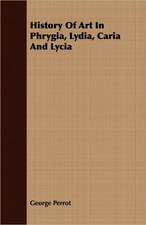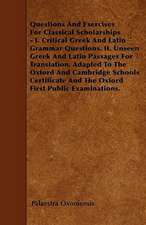Art History in the High School: Its Organization and Administration
Autor George Perroten Limba Engleză Paperback – 26 oct 2008
Preț: 190.96 lei
Nou
Puncte Express: 286
Preț estimativ în valută:
36.54€ • 38.25$ • 30.41£
36.54€ • 38.25$ • 30.41£
Carte tipărită la comandă
Livrare economică 26 martie-01 aprilie
Preluare comenzi: 021 569.72.76
Specificații
ISBN-13: 9781443773867
ISBN-10: 1443773867
Pagini: 64
Dimensiuni: 140 x 216 x 4 mm
Greutate: 0.09 kg
Editura: Alofsin Press
ISBN-10: 1443773867
Pagini: 64
Dimensiuni: 140 x 216 x 4 mm
Greutate: 0.09 kg
Editura: Alofsin Press











